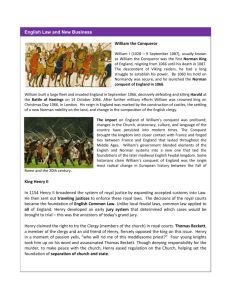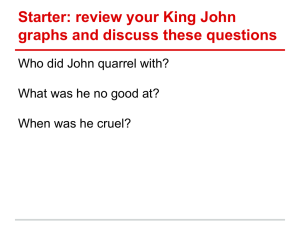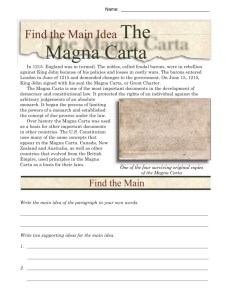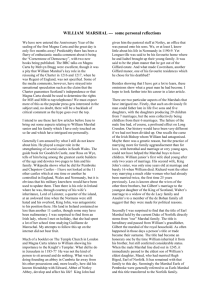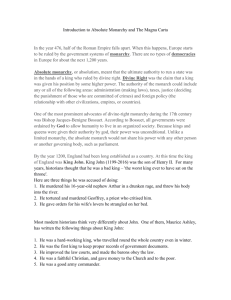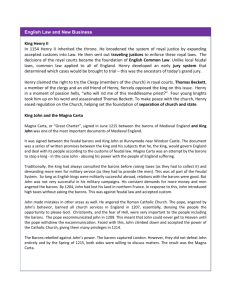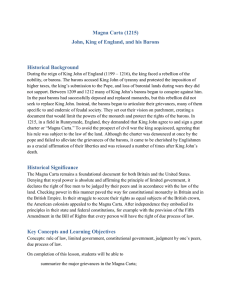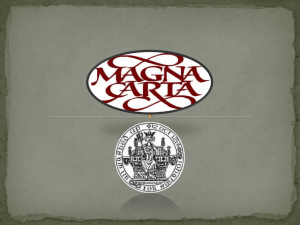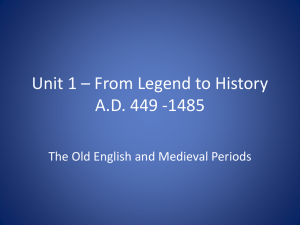Local History Links: William Marshal and the Battle of Lincoln 1217
advertisement
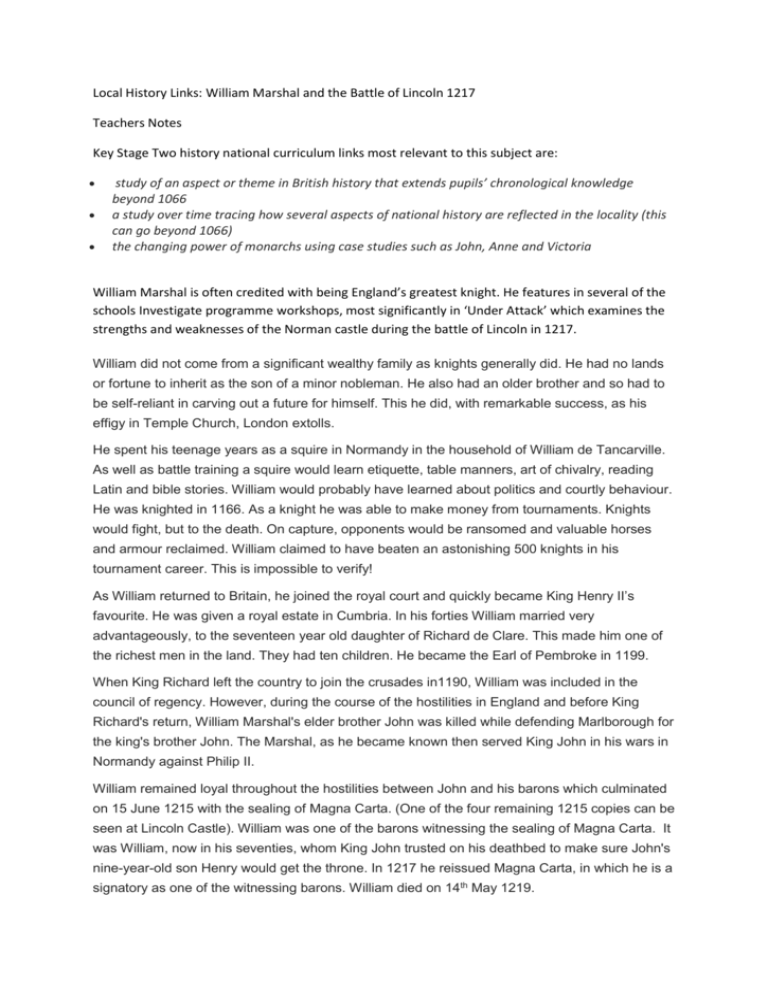
Local History Links: William Marshal and the Battle of Lincoln 1217 Teachers Notes Key Stage Two history national curriculum links most relevant to this subject are: study of an aspect or theme in British history that extends pupils’ chronological knowledge beyond 1066 a study over time tracing how several aspects of national history are reflected in the locality (this can go beyond 1066) the changing power of monarchs using case studies such as John, Anne and Victoria William Marshal is often credited with being England’s greatest knight. He features in several of the schools Investigate programme workshops, most significantly in ‘Under Attack’ which examines the strengths and weaknesses of the Norman castle during the battle of Lincoln in 1217. William did not come from a significant wealthy family as knights generally did. He had no lands or fortune to inherit as the son of a minor nobleman. He also had an older brother and so had to be self-reliant in carving out a future for himself. This he did, with remarkable success, as his effigy in Temple Church, London extolls. He spent his teenage years as a squire in Normandy in the household of William de Tancarville. As well as battle training a squire would learn etiquette, table manners, art of chivalry, reading Latin and bible stories. William would probably have learned about politics and courtly behaviour. He was knighted in 1166. As a knight he was able to make money from tournaments. Knights would fight, but to the death. On capture, opponents would be ransomed and valuable horses and armour reclaimed. William claimed to have beaten an astonishing 500 knights in his tournament career. This is impossible to verify! As William returned to Britain, he joined the royal court and quickly became King Henry II’s favourite. He was given a royal estate in Cumbria. In his forties William married very advantageously, to the seventeen year old daughter of Richard de Clare. This made him one of the richest men in the land. They had ten children. He became the Earl of Pembroke in 1199. When King Richard left the country to join the crusades in1190, William was included in the council of regency. However, during the course of the hostilities in England and before King Richard's return, William Marshal's elder brother John was killed while defending Marlborough for the king's brother John. The Marshal, as he became known then served King John in his wars in Normandy against Philip II. William remained loyal throughout the hostilities between John and his barons which culminated on 15 June 1215 with the sealing of Magna Carta. (One of the four remaining 1215 copies can be seen at Lincoln Castle). William was one of the barons witnessing the sealing of Magna Carta. It was William, now in his seventies, whom King John trusted on his deathbed to make sure John's nine-year-old son Henry would get the throne. In 1217 he reissued Magna Carta, in which he is a signatory as one of the witnessing barons. William died on 14th May 1219.
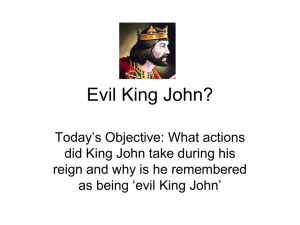

![Magna Carta [Introduction]](http://s3.studylib.net/store/data/007195918_1-022d84784ee30c33ca6fd3592f0fa07a-300x300.png)
